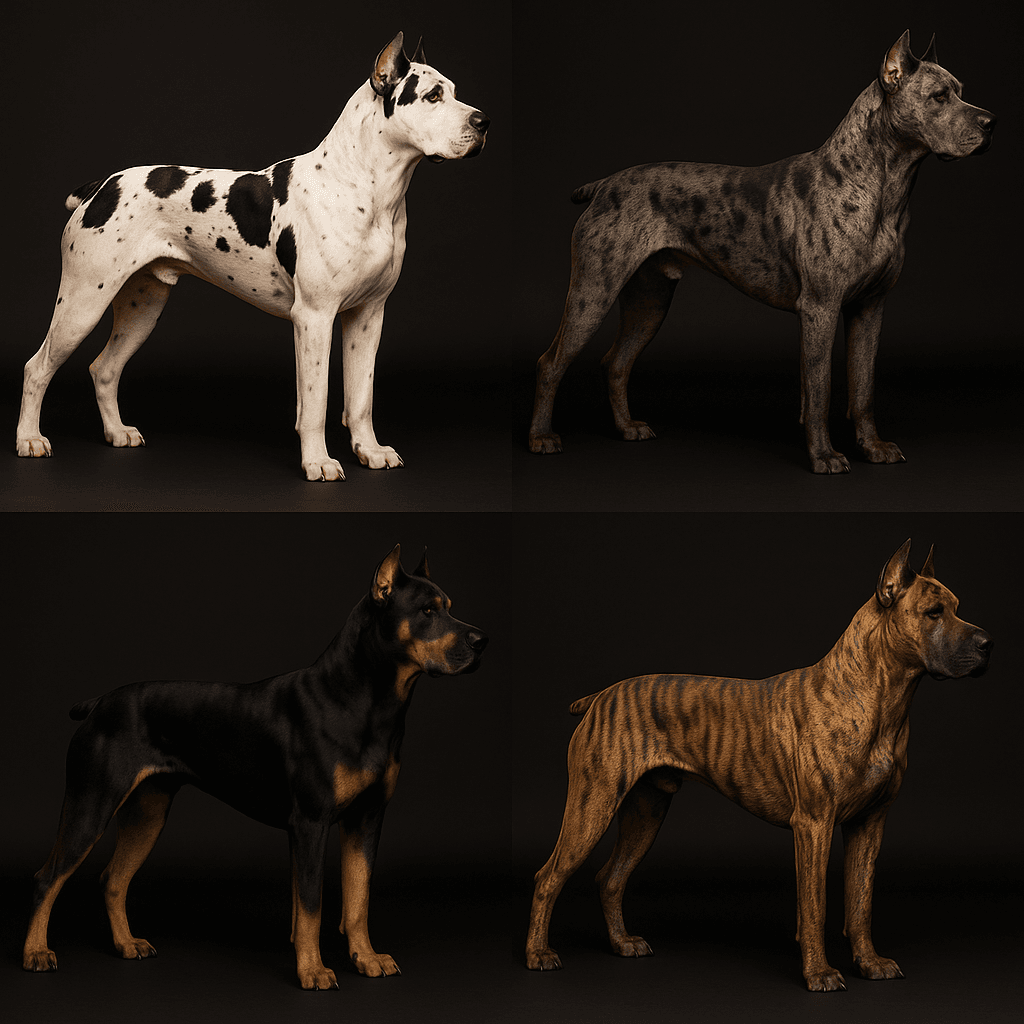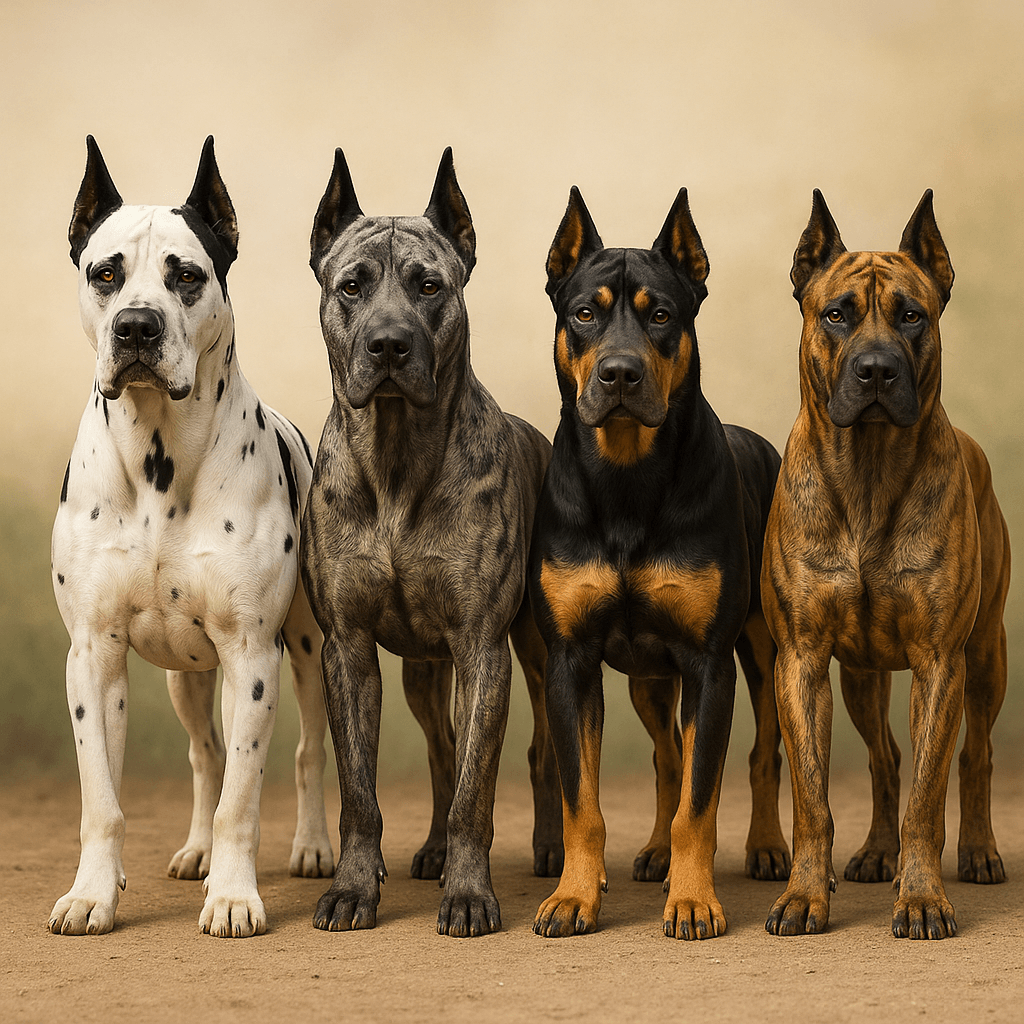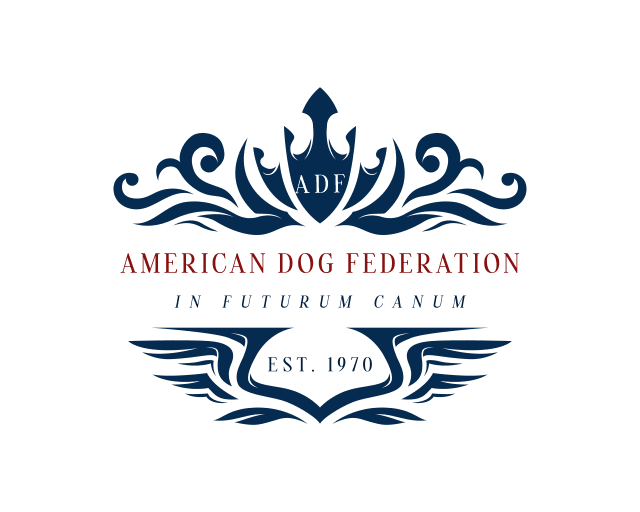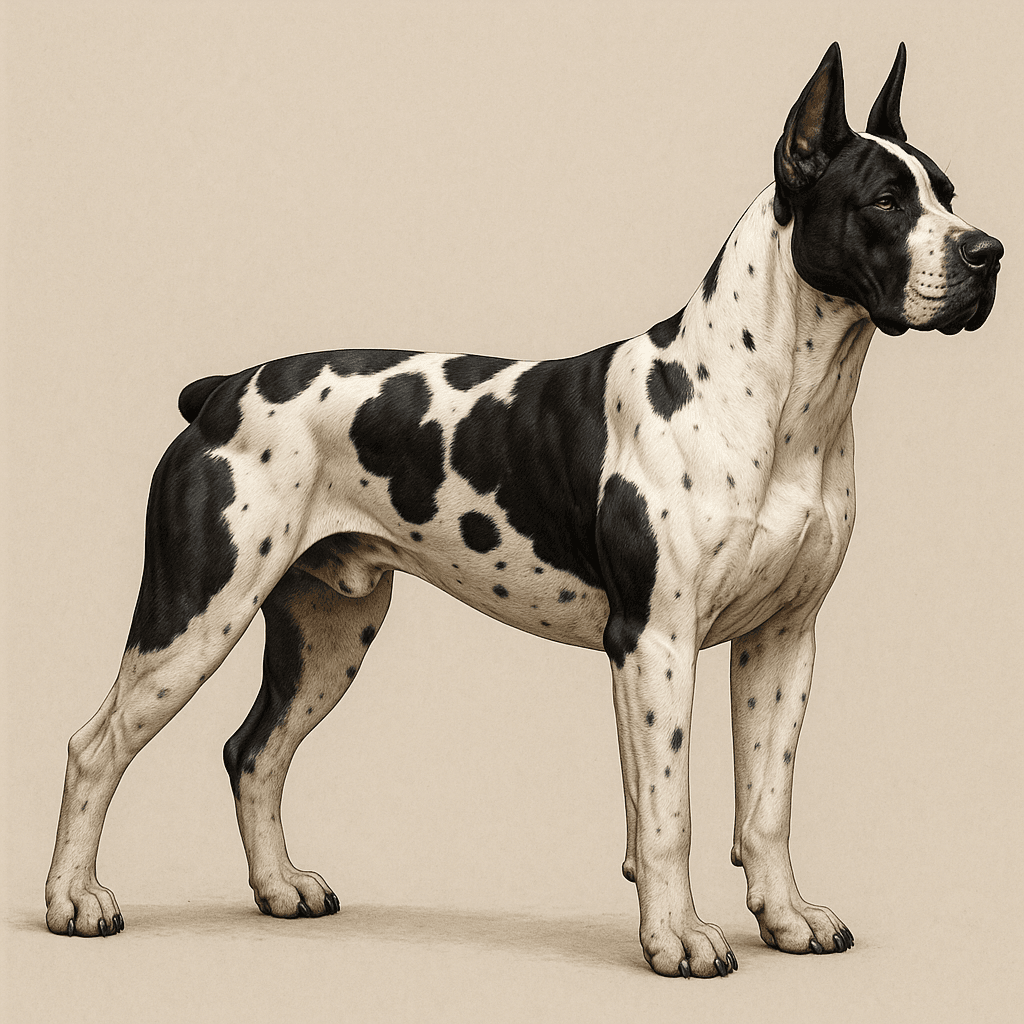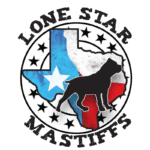Pillars & Purpose
- Breeding Pillars (in order): 1) Temperament — clear-headed, controllable, family-stable, powerful, confident, and well-rounded; 2) Health — genetic and orthopedic soundness; 3) Structure — functional, athletic, tall, substantial, and balanced.
- Purpose: Developed as a performance-selected family and property guardian capable of patrol, personal protection, and hog-catch where lawful. Dogs must run, jump, grip decisively when directed, and disengage on command.
- Off-Switch & Household Stability: Must possess the “off switch” typical of mastiffs. Calm, tolerant, non-reactive with household members (including toddler-level handling); defaults to guarding with no predatory drift toward children or household animals; prey drive remains neutral in the home and is expressed only on handler command; able to rest passively with the family yet instantly transition to full defensive engagement against a real threat; shows discernment—never initiating conflict but meeting any true threat with decisive, controlled force.
Temperament & Nerve
- Baseline: Calm, powerful, confident, and well-rounded; biddable to the handler; deterrence-first with high environmental stability.
- Drive Requirements: Must possess true defensive drive and a natural inclination to patrol and guard while remaining steady under pressure. Dogs exhibit a controlled defensive response to a credible threat—bold, confident, and clear-headed. Protection aptitude is preferred when performed under handler control and within applicable laws and club rules.
- Show Stability: Dogs must be sufficiently stable and controllable to be presented in conformation. Startle recovery is acceptable. A single non-contact lunge under obvious stimulus that is immediately checked and followed by full recovery may be penalized but is not grounds for automatic disqualification. Sustained or repeated lunging, loss of handler control, unprovoked human-directed aggression, or any contact bite results in excusal or disqualification per show rules.
- Prey Drive: Extremely high when under command, allowing high-speed pursuit and engagement of a decoy. Prey drive must remain fully controllable and appropriate to situation and handler direction.
- Household Behavior: Stable and tolerant in the home; patient with children and household animals.
- Control Requirement: Must remain under handler control at all times; loss of control is a disqualification in testing or the ring.
- Faults: Indiscriminate or uncontrolled aggression; lack of territorial instinct; unwillingness to engage a threat; lack of controlled prey drive.
- Disqualifications: Unprovoked human-directed contact bite or a directed snap within striking distance; sustained or escalating aggression; loss of handler control; panic/fear-biting; inability to be evaluated at distance due to instability.
Head
- General Type & Expression: Powerful but clean; balanced length, depth, and substance. Expression confident, focused, intelligent.
- Proportions & Planes: Skull and muzzle planes parallel to very slightly convergent. Muzzle ≈ 60–67% (about two-thirds) of total head length, with good depth carried to the nose; skull broad, moderately domed.
- Muzzle: Broad and deep from stop to nose; square, not snipey; no taper. Lips tight to moderately close; pendulous flews or drooling jowls are faults. Whisker pads firm; commissures dry to moderately tight.
- Stop: Moderate and well-defined; never abrupt or shelved.
- Nose: Large, broad, with wide open nostrils. All pigment acceptable.
- Bite & Dentition: Scissors preferred; level (edge-to-edge) acceptable. Overshot bite = disqualification. Severe undershot = disqualification; slight undershot = serious fault. Wry bite = disqualification. Full dentition (42 teeth) strongly preferred for breeding. Missing teeth penalties: one missing incisor or a single PM1 = minor fault; any missing PM2–PM4 or any missing molar (M1–M3) = serious fault; two or more PM2–PM4 and/or any two molars missing = disqualification for breeding. Documented traumatic breaks/wear not penalized if function is unimpaired.
- Eyes: Medium almond to slightly oval; neither too wide nor too close—inter-ocular spacing proportionate to skull width. Eyes not too far apart and/or too close, fitting the skull type. All eye colors acceptable, including heterochromia. Tight, well-fitting lids preferred; excessive haw or loose lower lids faulted; round/bulging eyes faulted.
- Ears (Natural & Cropped): Cropped or natural permitted. Preferred long, slender working crop; accepted battle crop. If natural: acceptable shapes include drop (button), rose, semi-prick, prick, and bat/tulip; ear set may be high or moderate; carriage may lie close to the cheek or stand off slightly; ear thickness/leather may vary. Asymmetry and variation in natural ear shape are acceptable. Ear style or carriage shall not be penalized.
Neck, Topline, Body
- Neck: Strong, clean, slightly arched; minimal dewlap preferred.
- Topline: Level and firm at all times, including under movement. Any departure from a level topline (roach, sway, sloping/high rear or low rear) is unacceptable and faulted.
- Chest & Ribcage: Deep to elbows (~50% of height), well-sprung ribs with an oval (egg-shaped) thorax preferred; slight barrel chesting is acceptable and not a fault provided the elbows clear the ribcage and movement remains free. Pronounced prosternum; excessive width forcing elbows out or causing paddling is faulted.
- Back & Loin: Broad, well-muscled; short, strong loin.
- Croup & Tail: Croup slightly sloped, broad, well-muscled. Tail thick at base, tapering, reaching to hock; carried low to level with slight curve when alert. Docked tail is standard; docking of 15–25% is preferred for function and injury prevention. Tight curl/screw/kinked tails faulted.
- Underline: Slight abdominal tuck showing fitness; excessive tuck or shallow chest are faults.
Forequarters
- Shoulders: Well laid back with scapulo-humeral angle ~105–115° (working assembly). Scapula and humerus near-equal length; upper arm set well under the body so the elbow lies under the withers/brisket, enabling long reach and shock absorption.
- Upper Arm & Elbows: Upper arm long; elbows close, neither in nor out. Loose/open elbows faulted.
- Forelegs: Straight, powerful, heavy-boned without coarseness; set directly under the body with enough width to clear the chest but not excessively wide.
- Pasterns: Short, strong, resilient with a slight slope of ~10–15°. Upright/knuckling pasterns faulted.
- Feet (Front): Tight and compact, round to slightly oval; well-arched toes; thick pads. Splayed/flat feet unacceptable. Dewclaws may be present or removed.
- Faults (Forequarters): Straight shoulder; short/open upper arm; upright (peg-leg) fronts; upright pasterns; restricted reach; pounding on the forehand.
Hindquarters
- Pelvis & Angulation: Broad, well-muscled; moderate angles to balance the front. Stifle well bent but not over-angulated.
- Thighs: Upper and second thighs long, thick, powerfully muscled for strong rear drive.
- Hocks: Well let down and parallel from behind. Legs viewed from behind must be straight and parallel. Cow hocks, sickle hocks, open hocks, or bowing are unacceptable.
- Feet (Rear): Tight and compact, round to slightly oval; well-arched toes; thick pads. Splayed feet unacceptable. Dewclaws may be present or removed.
- Faults (Rear): Over-angulated rears resulting in the rear lower than withers; sloping/sagging topline from withers to croup; lack of drive.
Coat
- Type: Short to medium-short, dense, smooth, and weather-resistant.
- Texture: Close-lying and smooth; not harsh or wiry.
- Length: Short coat preferred; longer coats allowed but not preferred and not disqualifying.
- Faults: Open, sparse, or woolly coats lacking weather resistance.
Color & Pigment
- Colors: All colors and patterns acceptable, including harlequin, merle, black with white, fawn, brindle, black-and-tan, blue/gray, solid white, and patterned variants.
- Pigment: All nose and eye-rim pigments acceptable (black, brown, liver, flesh-pink).
- Eyes: Any color, including heterochromia.
- Notes: Variation expected due to diverse foundation stock.
- Faults: None related to color or pigment; color/pigment shall not be grounds for disqualification.
Size, Weight, and Proportions
- Size: Males 26–31 in at the withers (ideal 28–30); Females 23–30 in (ideal 26–28). Slight variation acceptable with correct proportions and athletic function.
- Weight: Males 120–150 lb (ideal 130–145); Females 100–130 lb (ideal 110–125). Heavier or lighter not disqualifying if the dog remains balanced, athletic, and sound.
- Proportions: Slightly longer than tall (approx. 10–15% longer than height). Substance in proportion to height—massive yet athletic.
- Faults: Obesity; lack of athleticism; imbalance from excessive size or lack of substance.
Movement & Gait
- General: Powerful, efficient, ground-covering; balanced reach and drive with a level, steady topline.
- Front Reach: At the trot, the forefoot lands near a vertical line dropped from the nose without excessive lift; elbows remain close and track straight.
- Rear Drive: Rear extends and drives under the body with low, efficient hocks; pads may flash but should not flip high.
- Timing & Track: Clean diagonal trot; converges to single-track as speed increases; no pacing or crabbing.
- Faults: Short/choppy reach from upright front or short upper arm; hackney/high lift; pounding on the forehand; over-reach with interference; topline bobbing.
Condition & Fitness
- Condition: Presented in strong working condition—lean, muscular, athletic.
- Expectations: Functional strength, endurance, and thermal tolerance for outdoor work from 28°F to 110°F.
- Faults: Obesity, poor muscle tone, poor wind/endurance, or any condition impairing work.
- Disqualifications: Any structural/health condition causing respiratory compromise, heat intolerance, or inability to move soundly.
Health & Disqualifications
- Health Requirements: All breeding dogs must be free of known heritable disease. Embark full DNA panel required prior to breeding; records must be retained by the breeder.
- Genetic Status Rules: DCM1: Any dog testing affected or carrier is not breedable (disqualification for breeding). All other panel-tested conditions: any dog testing affected/at risk is not breedable.
- Longevity Expectation: 9–13 years.
- Breeding Age Limits: Females 2–7 years old at time of breeding.
- Faults (Health): Any diagnosis of hip or elbow dysplasia.
- Radiographic Requirement (Suspect Stock): Any prospect showing orthopedic concern must have hips and elbows X-rayed and cleared by a licensed veterinarian before breeding; records retained by the breeder.
- Automatic Disqualifications: Overshot or severe undershot bite; congenital blindness or deafness; DCM1 affected or carrier status; inability to stand or move soundly; severe respiratory compromise or heat intolerance; panic-based fear-biting or unprovoked human aggression; any condition preventing safe working ability.
Presentation & Ring Procedure
- Judging Procedure: Primary evaluation is visual at a respectful distance. A hands-on examination is at the judge’s discretion and only if the handler confirms the dog can be safely examined; otherwise, a no-contact exam may be used.
- Handler Presentation: Calm, controlled handling that demonstrates stability and responsiveness to commands.
- Separation: Exhibits should be well-spaced from other dogs in the ring to prevent conflict.
- Evaluation: Judges assess structure, movement, and expression visually; any temperament assessment is performed under controlled conditions respectful of natural protective instincts.
- Excusals: Any exhibit that cannot be safely presented, shows loss of handler control, repeated or non-recovering lunging, or any contact bite must be excused from the ring. A single non-contact lunge that is immediately checked and followed by full recovery may be penalized but does not require excusal.
